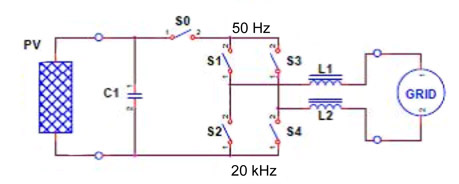
Introduction:
Solar on panels latest update in 2024, the development of solar energy goes back more than 100 years. But it wasn’t until the discovery of the “photovoltaic effect” by Edmond Becquerel that would allow the conversion of sunlight into solar electric energy. And from this humble beginning would arise the device we know today as the solar panel.
How does solar on panels work?
In off-grid solar applications, a battery bank, charge controller, and, in most cases, an inverter are necessary components. The solar on panels array sends direct current (DC) electricity through the charge controller to the battery bank. The power is then drawn from the battery bank to the inverter, which converts the DC current into alternating current (AC) that can be used for non-DC appliances. Assisted by an inverter, solar panel arrays can be sized to meet the most demanding electrical load requirements. The AC current can be used to power loads in homes or commercial buildings, recreational vehicles and boats, remote cabins, cottages, or homes, remote traffic controls, telecommunications equipment, oil and gas flow monitoring, RTU, SCADA, and much more.

solar on panels Prose 2024:
- Using solar on panels is a very practical way to produce electricity for many applications.
- The obvious would have to be off-grid living.
- Remote homes and cabins benefit nicely from solar power systems.
- A solar electric system is potentially less expensive and can provide power for upwards of three decades if properly maintained.
- Besides the fact that solar panels make it possible to live off-grid, perhaps the greatest benefit that you would enjoy from the use of solar power is that it is both a clean and a renewable source of energy.
- With the advent of global climate change, it has become more important that we do whatever we can to reduce the pressure on our atmosphere from the emission of greenhouse gases.
- Solar panels have no moving parts and require little maintenance.
- Last, but not least, of the benefits of solar panels and solar power is that, once a system has paid for its initial installation costs, the electricity it produces for the remainder of the system’s lifespan, which could be as much as 15-20 years depending on the quality of the system, is absolutely free!
- How?
- Solar panels absorb the photons and, in doing so, initiate an electric current.
- An average home has more than enough roof area for the necessary number of solar panels to produce enough solar electricrity to supply all of its power needs. Excess electricity generated goes onto the main power grid, paying off in electricity use at night.
Conclusion:
Prices for solar panels have decreased substantially in the last couple of years. This is great because, combined with the 30$ federal solar investment tax credit and other applicable incentives, now is the best time ever to invest in a solar power system. And, consider this: a solar power system costs about the same as a mid-sized car!
